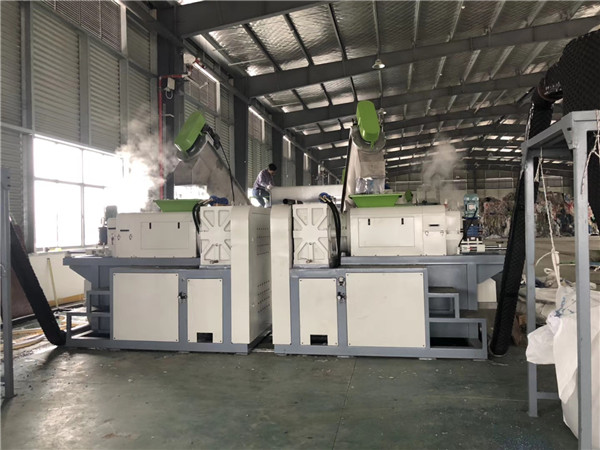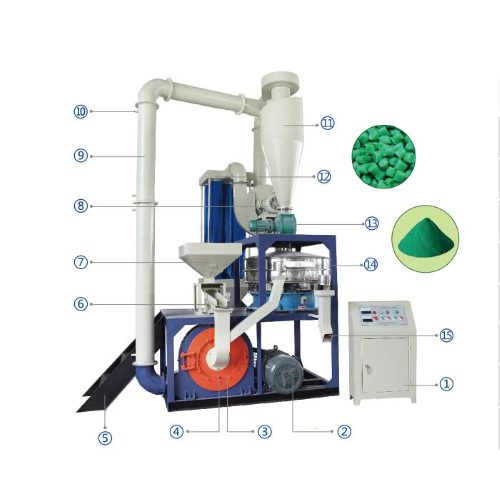Sign in or Subscribe See Offers
Questions about your account? Our customer service team can be reached at circulation@metln.org during business hours at (207) 791-6000. Car Lead Acid Battery Recycling Machine

Demand for recycled polyethylene terephthalate has been limited by the variability of its cost versus virgin plastic and the toxicity of the material.
You are able to gift 5 more articles this month.
Anyone can access the link you share with no account required. Learn more.
With a Press Herald subscription, you can gift 5 articles each month.
It looks like you do not have any active subscriptions. To get one, go to the subscriptions page.
With a Press Herald subscription, you can gift 5 articles each month.
Ground plastic flakes fall from a machine at a PET recycling plant in Toluca, Mexico, in 2019. Alejandro Cegarra/Bloomberg
Most gamblers looking for action in Las Vegas head for the Strip, but the biggest bet to watch these days is on the edge of town. There, a vast new complex will take plastic waste from across the West and process it into high-quality material that manufacturers can turn back into water and soda bottles or other food-grade packaging.
Republic Services Inc., one of the nation’s largest trash haulers, opened the new 75,000-square-foot Polymer Center on Tuesday. Republic says it has invested 70 million dollars in the plant on the belief that there’s a growing US market for recycled PET flake. PET, or polyethylene terephthalate, is the light, transparent plastic used in soda and water bottles.
Every year, the US generates roughly 40 million tons of plastic, and at best, less than 9% of it is recycled. PET is recycled more than most types of plastic, at a rate of about 30%, according to figures from the Environmental Protection Agency. Yet that 30% ceiling has remained stubborn. When PET is reused, it’s often “downcycled” into carpets or clothing rather than turned back into food-grade plastic, as it is at the new Republic facility.
Demand for recycled PET has been limited by the variability of its cost versus virgin plastic and the toxicity of the material. Recycled flake currently is in such high demand that it is commanding a premium of three times the raw bales, according to Republic executives; that gives them an incentive to bring recycling in-house. Recycled PET is historically needed to compete against virgin flake, which can run cheaper and doesn’t need toxic additives removed. But that dynamic could be changing.
“Demand for post-consumer recycled plastic is rising, as both companies and governments now have recycled content mandates in place,” said Julia Attwood, head of sustainable materials at research group BloombergNEF. “But those same companies are hedging their targets by saying that the recycled material is hard to find, or simply not available. This new plant will go some way to quieting those concerns.”
Four states, including California and Oregon, have mandated that some percentage of recycled plastic be used in packaging and plastic bags. Corporate pledges also point to growing demand. The Coca-Cola Co., for example, aims to use 50% recycled material in its packaging by 2030. (Coke, which is the world’s biggest plastic polluter, has made and broken pledges in the past. The company will be a customer of the new center.)Advertisement
“Given the historical volatility of the recycled plastic market, this will increase efficiency in the supply of recycled material to our system,” said Kurt Ritter, vice president for sustainability at Coca‑Cola North America. “It is crucial to establish partnerships like this one to promote growth and bring more certainty to the recycled plastic market.”
The promise of a larger market is luring big players like Republic into what has historically been a fractured landscape populated mostly by small operations.
Until the facility opened, Republic only collected and sorted recyclables, selling plastic bales to others to process. Now, it hopes that by vertically integrating the process from curbside pickup to recycled flake, it can overcome the problems of fragmentation, such as an inconsistent supply of feedstock.
“The Polymer Center can do what others cannot because of our scale – our aggregation of materials and consistent volume of feedstock that no other facility can access or leverage,” said Pete Keller, Republic’s vice president of recycling and sustainability.
In addition to turning PET bottles into food-grade plastic flakes, the facility will take in HDPE – high-density polyethylene, the plastic used for laundry detergent bottles – and sort it by color, which is another innovation. Those colored bales can be turned back into similarly colored products. Most colored HDPE is currently lumped together and therefore can only be used to make dark gray or black products, like drainage piping.
Yet Keller acknowledges that for now, even Republic cannot produce enough supply for the facility, which at peak capacity will be able to take in 80,000 metric tons of trash a year and produce more than half a million tons of flake. The problem is that most consumers toss PET bottles where they use them – in public trash cans, instead of residential or commercial recycling bins. So Republic, despite owning and operating scores of recycling collecting stations nationwide, will have to source 50% of its supply from outside, Keller said.
Jan Dell, an activist who founded the nonprofit The Last Beach Cleanup, argues the only way to reduce plastic pollution is to stop making so much plastic in the first place. She says the economics just aren’t there to support large-scale domestic PET recycling. “The domestic producers who are coming online to meet these new laws are going to be very disappointed,” she said. “Bottlers can buy recycled [PET] much cheaper from Mexico and Thailand, and they are flooding the market. PET recyclers in Europe are already shutting down due to cheap imports from Asia.”
Republic says it is not worried about imports carving up its market. It has broken ground on another similar facility in Indianapolis and is considering a third in the Northeast US.
Adam Gendell, director of system optimization at the Recycling Partnership, a nonprofit that works with and has received funds from big plastic polluters, says that this is still early days. “There is a general sense that there are going to be brighter days ahead for recycling in general,” he said. “If those targets in the California and Oregon bills are going to be met, there’s going to be a lot more material in the recycling market. There’s a lot of positioning right now to be ready for that influx of material.”
Success. Please wait for the page to reload. If the page does not reload within 5 seconds, please refresh the page.
Enter your email and password to access comments.
Don't have a commenting profile? Create one.
Hi, to comment on stories you must create a commenting profile. This profile is in addition to your subscription and website login. Already have a commenting profile? Login.
Please check your email to confirm and complete your registration.
Create a commenting profile by providing an email address, password and display name. You will receive an email to complete the registration. Please note the display name will appear on screen when you participate.
Already registered? Log in to join the discussion.
Only subscribers are eligible to post comments. Please subscribe or login first for digital access. Here’s why.
Use the form below to reset your password. When you've submitted your account email, we will send an email with a reset code.

Post Consumer Plastic Recycling Send questions/comments to the editors.